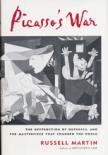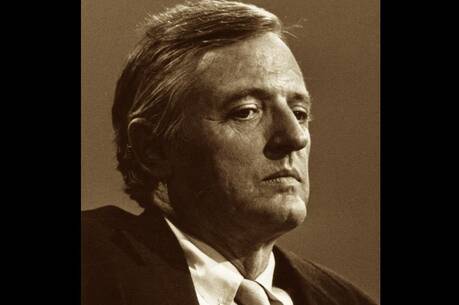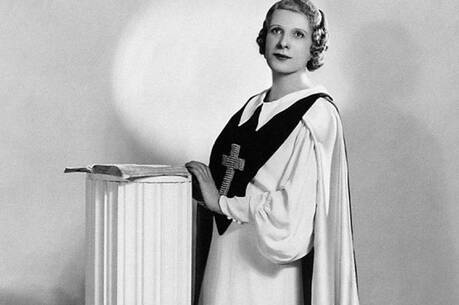A Basque Legacy
In a story carried by National Public Radio on Jan. 2, 2003, the correspondent Silvia Poggioli reported that 27 years after the death of Francisco Franco, there is increasing interest in Spain in uncovering the brutal history of the Franco dictatorship. It would seem, then, that the appearance of the book Picasso’s War: The Destruction of Guernica, and the Masterpiece that Changed the World is an example of fortuitous timing for author Russell Martin as he focuses on the most infamous Franco atrocity, the bombing of the Basque town of Guernica in 1937, and the decision of Pablo Picasso to paint the monumental work named after the city. His painting, considered by many to be one of the greatest art works of the 20th century, has in fact perpetuated public awareness of the brutal attack on Guernica some 66 years after the event.
In his prologue, Martin explains how he was introduced to the Guernica story as a high school foreign exchange student in Spain in 1968 through a Spanish art and culture professor, who made a lasting impression on the writer. Throughout the book, the author interweaves his Spanish teacher’s stories of Guernica with socio-political history and art history as he discusses the rise and fall of the Franco government as well as the history of Picasso’s great painting, from its creation in 1937 for the Spanish Pavilion at the Paris World’s Fair to its touring in the 1930’s and 1940’s to raise money for Spanish refugees, to its long-term residency at New York’s Museum of Modern Art, to its return to Spain in 1981 and to a failed attempt to have it placed in the Frank Gehry-designed Guggenheim Museum in Bilbao. It presently resides at Madrid’s Museo Nacional Centro de Arte Reina Sofia, where it has been since it was moved from the Prado in 1992.
Perhaps the book’s most powerful passages are the author’s description of the assault on Guernica and the events that followed. The attack on Guernica, approved by Franco, was planned by the German military and carried out by German and Italian airpower. The first wave of planes dropped blast bombs that destroyed the principal buildings of the town; the second flew low, gunning down the fleeing citizens; and the third dropped incendiary bombs throughout the town. The attack lasted for over three hours and offered the world the first example of aerial saturation bombing.
Martin intensifies his description of Guernica under seige through eyewitness accounts. The event was so heinous that Franco himself denied any responsibility, blaming the attack on the Communists. Franco’s denials continued into the 1960’s, even though in the 1946 Nuremburg trials, Herman Goering admitted to planning the attack with the permission of Franco.
Throughout the book, Martin employs a reportorial style that brings a sense of immediacy to both the political and the artistic dimensions of this story—dimensions that become inevitably intertwined. He skillfully brings together a variety of events that occurred at approximately the same time: for example, in Chapter 4, Martin describes the status of the Spanish Civil War at the time of the opening of the Paris World’s Fair in May of 1937, Picasso’s delivery of the painting to the Spanish pavilion, the politics of architecture at the World’s Fair (especially between the Soviet and German pavilions), a detailed description of the Spanish pavilion, the mixed public reaction to the Picasso mural at the fair, and the attack by the Nazis on modern art with the opening of the Degenerate Art Exhibition in Munich just two months after the opening of the fair.
There are, however, problems with this book. Is it general history, is it speculative history or is it art history? The book offers no documentation—no footnotes, endnotes, index or formal bibliography—something that is required for an historian’s credibility. Martin attempts to explain this omission in his bibliographical note at the book’s end by saying that the book “is intended for general readers rather than scholars and for that reason I have chosen not to cite sources in the text or in the accompanying notes.” This is troubling. In an era when some of the most horrendous atrocities of the 20th century are being denied by some groups, it is more important than ever to establish the credibility of the information being used.
Regarding the matter of “speculative history,” what is of particular concern is the treatment of Picasso in the early part of this book. There Martin discusses how the artist obtained his information about the attack, his reactions and his preparatory work for the epic painting. Frequently, when the author does not support his statements about Picasso’s actions, he uses such phrases as “it seems likely” or “it is probable.” This occurs often enough to become noticeable, and its frequency presents problems for historians and art historians.
Most prior treatments of Picasso’s “Guernica” have come from the field of art history, from which Martin borrows heavily. Yet he provides none of the visual tools needed for a solid art-historical presentation. Primary among these are images. With the exception of the dust jacket and the frontispiece, which bear the same image of the painting, Picasso’s War is remarkably devoid of images. There are no reproductions of the artist’s preliminary sketches for “Guernica,” even though the author spends a great deal of time discussing those sketches, no maps of Spain to help the reader locate the town of Guernica and no images of the town before and after the attack. Although Martin also describes Picasso’s breakthrough into Cubism, he provides no image of a Cubist work of art. Trying to explain Cubism to the general reader without at least one visual example is of little or no help.
These problems are regrettable, because Martin has written a compelling story of an event that still resonates in our present day. Many of the important English-language books on Guernica are now out of print, and Martin’s is poised to assume a crucial role in continuing the Guernica story in our time. Many of Martin’s readers will likely be from a new generation unfamiliar with the events of Guernica. Documentation and images would have contributed greatly to helping this generation get a verifiable grasp on the brutality of the Guernica attack and on the power of art to respond to this crime against humanity in a way that moves beyond propaganda. Given the importance of the subject and the engaging nature of the book, this is a missed opportunity.
This article also appeared in print, under the headline “A Basque Legacy,” in the March 31, 2003, issue.








